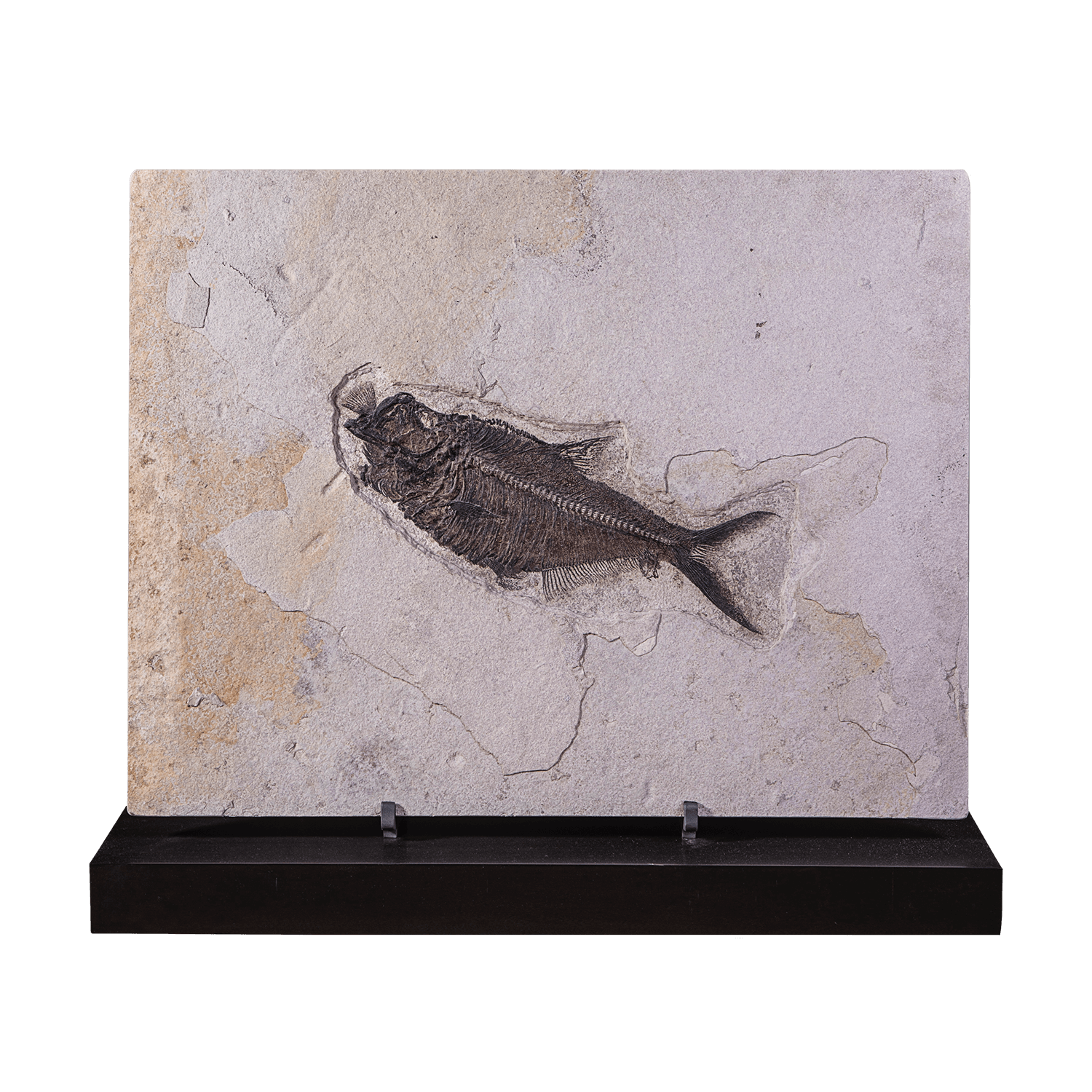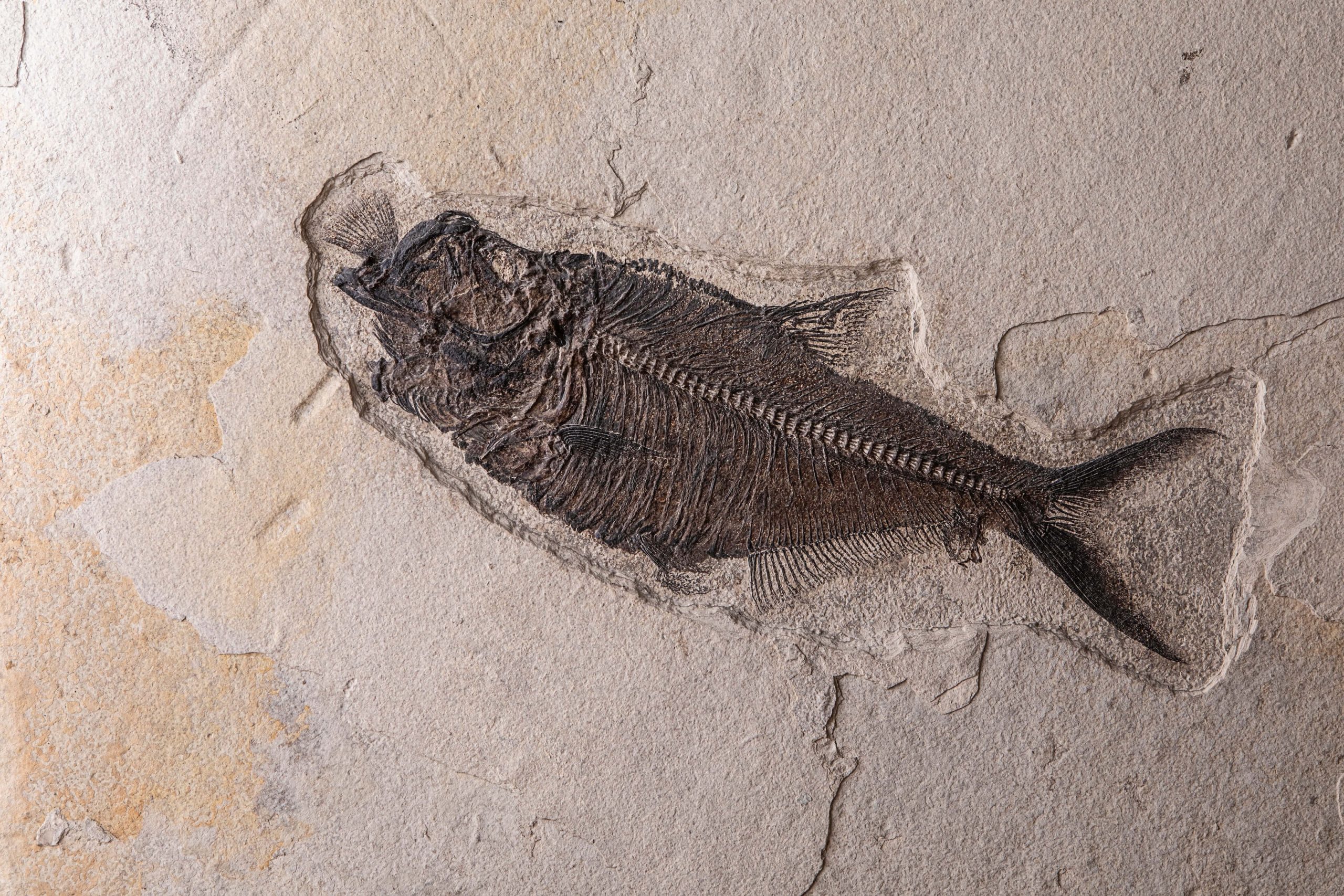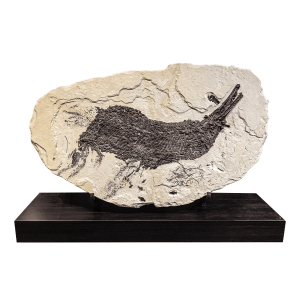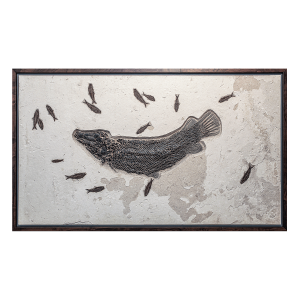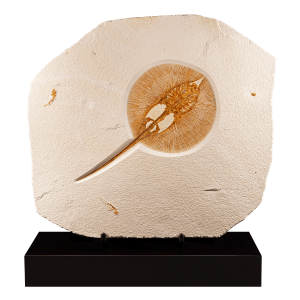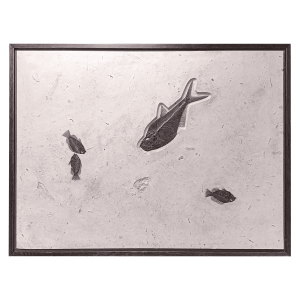Fish Aspiration
A true witness to the past, this fossil fish aspiration captures the exact moment a fish swallows its prey! Found in the famed Green River Formation, known for its wealth of vertebrate fossils, this piece was skillfully prepared, preserving the delicate fins and vertebras in great detail. A beautiful contrast of the all original, chocolate brown fish against the warm cream matrix, from which they were unearthed, are displayed on a custom ebony base. The perfect placement of the Diplomystus – an extinct herring – seems to swim towards the surface of the water as it swallows the Priscacara – an extinct perch. This rare aspiration reveals a fleeting moment in time, a testament to the past. As the Rocky Mountains formed, three large lakes formed in basins across 60,000 square miles of Wyoming, known today as the Green River Formation. In the 1840s, the first reports of fossils in the area were recorded. Today the formation is famous for its abundant variety of fishes, insects, and plants preserved in finely laminated limestones and shales.
Private negotiation
Details
| Specimen | Diplomystus sp. – Priscacara sp. |
|---|---|
| Geological Period | Eocene |
| Age | 55 Million Years Old |
| Origin | Wyoming (USA) |
| Dimensions | L 39 x D 14 x H 33 in (L 100 x D 35 x H 85 cm) |
| Weight | 110 lb (50 kg) |
The above dimensions refer to the piece complete with stand, the fossil alone measures L 37 x D 1 x H 28 in (L 94 x D 2 x H 70 cm) and weighs 44 lb (20 kg).
Diplomystus are one of the most common genera across the Green River Formation. The large fish likely swam alone, and its morphology and shape of the mouth suggest it hunted near the water’s surface. Due to its thin scales, they are rarely well preserved and must be prepared by the most skillful restoration artists.
Priscacara are distinguished from other Green River fish by their disc shape and have not been identified outside of the Eocene geologic period. A smaller fish that sometimes grew up to 16 inches long, it was believed to swim in schools feeding on gastropods and crustaceans. They evolved spines, thought to defend against predators like the Diplomystus.
Related Articles
Please contact us at Geoworld USA
Phone : +1 520 884 4867
Mail : gallery@geoworldusa.com

